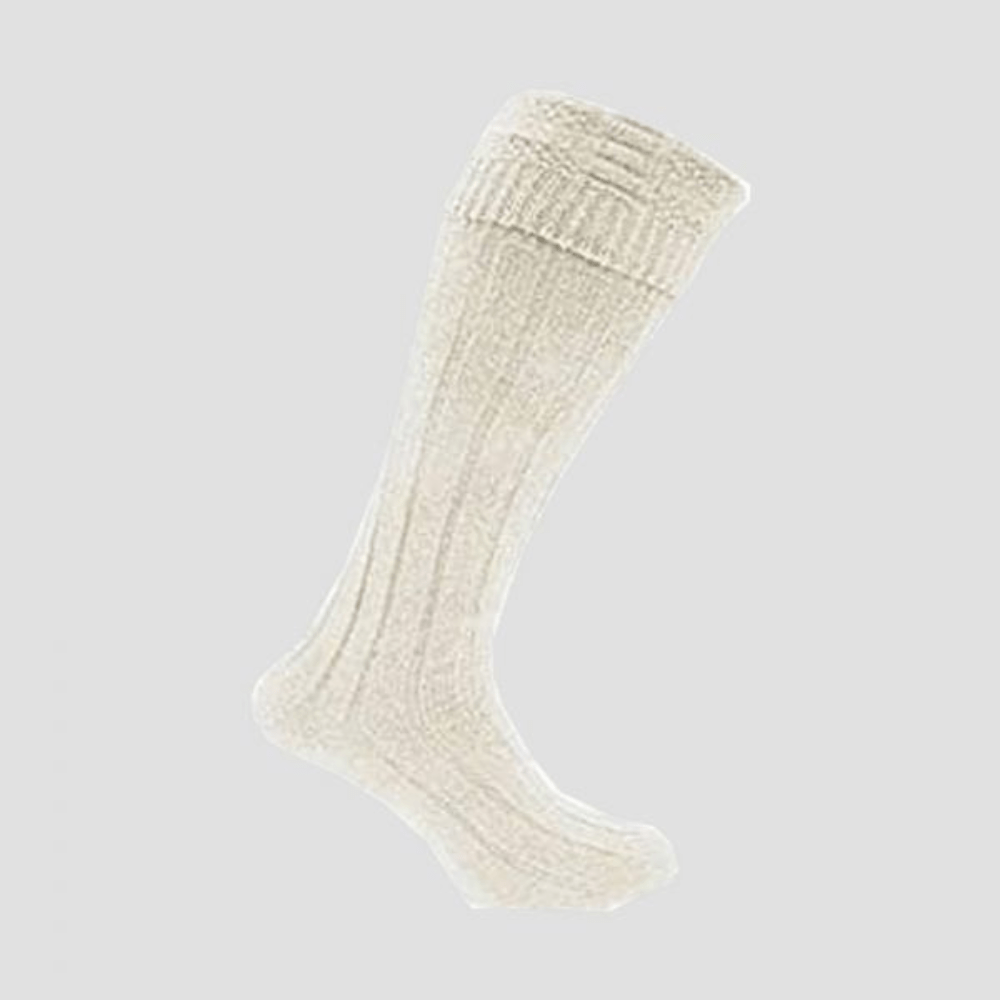
The white kilt socks, often known as kilt hose, are a traditional part of Scottish attire. These socks are worn with kilts, which are a special type of skirt mainly worn by men in Scotland. The history of white kilt socks is closely tied to the history of the kilt itself, which has been worn for centuries in Scotland.
In the past, Scottish people wore kilts as their everyday clothing. These kilts were often made from wool and featured tartan patterns, which are colorful designs made of crisscrossed horizontal and vertical bands. To complete the outfit, they wore knee-high socks that were usually made of wool as well. These socks, known today as kilt hose, helped keep the wearer warm in Scotland's cold climate.
White kilt socks became popular because they matched well with the bright and bold colors of the tartan kilts. White was a neutral color that did not clash with the tartan patterns, making it a perfect choice. Over time, these socks became a standard part of Scottish dress, especially for formal occasions like weddings, dances, and other celebrations.
Today, white kilt socks are still worn with kilts during special events. They are usually made of wool or a wool blend, which helps keep them comfortable and warm. The socks are often folded down at the top to create a thick cuff, which adds to their traditional look. Some people also add a decorative item called a "flashes," which are small pieces of fabric that hang from the socks and add a pop of color.
In addition to their traditional use, white kilt socks have also become popular in other parts of the world. People who appreciate Scottish culture or have Scottish ancestry often wear them during special occasions to honor their heritage. They are also worn by members of Scottish pipe bands and dancers who perform traditional Scottish dances.
Overall, white kilt socks are an important part of Scottish clothing. They are more than just a fashion item; they are a symbol of Scottish tradition and pride. By wearing these socks, people can connect with Scotland's rich history and show their respect for the customs that have been passed down through generations.
Choose options

